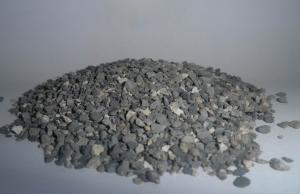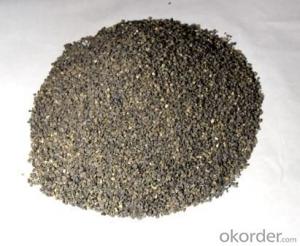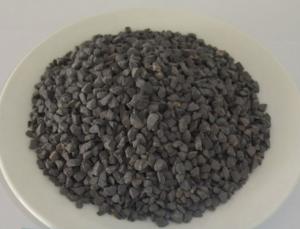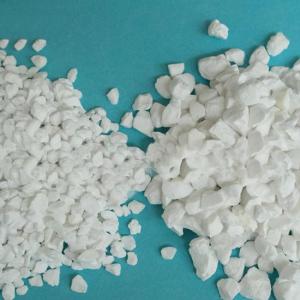Raw Materials for Refractory:Simn Powder 614 with Certificates SGS/CIQ/ISO
- Loading Port:
- Shanghai
- Payment Terms:
- TT OR LC
- Min Order Qty:
- 5000 m.t.
- Supply Capability:
- 5000 m.t./month
OKorder Service Pledge
OKorder Financial Service
You Might Also Like
Specifications
1 factory supply directly
2 quality in guarantee
3 timely delivery
4 certificate:SGS/CIQ/ISO
SiMn Powder 614 Certificate:SGS/CIQ/ISO
Product Introduction
Silicomanganese alloy mainly has 60/14 65/17 68/18, and several other brands.
SiMn Powder 614 Certificate:SGS/CIQ/ISO
Grade | Chemical composition (%) | ||||
Mn | Si | C | P | S | |
FeMn60Si14 | 60-70 | 14-17 | 2.5 | 0.3 | 0.04 |
FeMn65Si17 | 65-70 | 17-20 | 1.8 | 0.25 | 0.04 |
FeMn68Si18 | 65-72 | 17-20 | 1.8 | 0.25 | 0.04 |
SiMn Powder 614 Certificate:SGS/CIQ/ISO
siliconmanganese alloy is an alloy made of manganese, silicon, iron and small amounts of carbon and other elements. Silicon manganese alloy is used as compound deoxidizer, also reducing agents of the production of low-carbon ferromanganese and manganese silicon thermal power production. Manganese and silicon are the main alloying elements in the steel. Manganese is one of the main deoxidizers in steel-making process, further more, almost all kinds of steel are required to use manganese deoxidation. Because when deoxidize with manganese to generated oxygen products with low melting point, easy to rise; Manganese also increases strength of silicon and aluminum deoxidation effect. All industrial steel are to be added a small amount of manganese as a desulfurization agent, the steel can be hot rolling, forging and other processes without breaking, manganese, or the most important types of steel, the alloy elements in the alloy is also added 15% Mn above to increase the structural strength of steel.


- Q: What are unshaped fire-resisitance materials?
- Refractory castable, refractory plastic material, usually classified according to construction and manufacture method, unfired bricks precast block, refractory pressed into material, refractory cast material, refractory coating, refractory ramming material there are many classification methods
- Q: What is the fire endurance of ceramsite concrete blocks?
- What is mentioned in fire?safety?rules is that the fire endurance of 240mm thick hollow brick of ceramsite concrete is 2.9h, so 190mm thick hollow brick is 3h. B05 thickness(mm), fire endurance(h). Combustion performance 100 4.0. Non-combustible component 150 6.0200 8.0300 〉8.0B06 100 〉4.0150 〉6.0200 〉8.0300〉8.0: The fire endurance performance of building blocks wall in the table is taken from the Tianjin Construction Standard "light steam pressing aerated?concrete?block" DB / T29-128.
- Q: what is the requirements of roofing insulation materials fire rating?
- The fireproofing requirements of architectural design are regulated by architectural design fire?safety?rules, roofing insulation material only has the requirements of materials combustion performance, namely non-combustible material. No fire rating requirements.
- Q: I wanna ask you, which level is b1 fireproof and thermal inuslation matertial ??
- I soppose you mean rubber and plastic! Only rubber and plastic has b1b2 level. Level b1 is the fireproofing level b1, because the rubber and plastic does not belong to the fireproofing material. It only has fire?retardant. The wholesale of all kinds of thermal insulation material and construction need to look at the name, hope you adopt.
- Q: What are the fire resistances of grc partition panels?
- A-level fireproofing which can last for 4 hours.
- Q: Who knows that among refractory materials, insulation boards from which refractory material industry is superior in quality?
- When casting ingot, after high temperature molten steel is poured into ingot mold, molten steel keeps shrinking during cooling, for example, killed steel is shrinking 3% --5%. because of fast heat dissipation of ingot head , some shrinkage holes appear at the head of ingot. Therefore, you should cut shrinkage holes which account for more than 15% of the ingot quality in the head while cutting steel ingot cogging. If effective measures were taken to insulate the head of ingot from heat, then the coagulation time of ingot head would lag behind in the body of the ingot solidification, which will greatly shrinkage holes, improve ingot yield so as to reduce energy consumption of steelmaking. Adiabatic plate can achieve this purpose. China Heng insulation board has the advantages of uplifting adiabaticity and small heat capacity, so that it greatly reduced heat loss of molten steel, And the tundish can be directly put into use without preheating, thereby saving a large amount of preheating fuel. So in the current process of continuous casting, the heat insulation board is the main material of tundish lining.
- Q: What are the materials of class A fire resistant window?
- Environmentally friendily, non-poisoned non-peculiar smell, non-radioactive; non-combustible, fireproof, moisture-proof, corrosion-resistant; easy to operate, lightweight, high strength, themal insulation, sound insulation; able to be cut, planed, sawed and carved. It also meets GB8624 -2006A1 level non-combustible standards. Lightweight, high strength, anti-aging, corrosion resistance; meeting the GB / T20285-2006 Opium (AQ1) safety and environmentally friendly products; Foamed fire door core board specifications: 2100 × 900 × (26 ~ 65) mm; 2050 × 850 × (26-65), and many other specifications. I hope my answer can help you.
- Q: What is neutral refractory? Can refractory suppliers tell the main components of it?
- The material using Al2O3, clay, bauxite and corundum as the main components is neutral material; the material using MgO and CaO as the main components is basic material; the material using SiO2 as th emain component is acidic material.
- Q: How is the development of Xinmi refractories industry? What's its advantages and disadvantages?
- The advantages are largest scale, top production amout in the country, accounting for one-third of the national market, having technology, strength and the market. The disadvantages are the lack of mineral resources, serious environmental pollution,
- Q: What are the refractories for converter?
- Magnesia carbon material with large surface repair vessel, in addition to supporting the use of magnesia and magnesia cement.
Send your message to us
Raw Materials for Refractory:Simn Powder 614 with Certificates SGS/CIQ/ISO
- Loading Port:
- Shanghai
- Payment Terms:
- TT OR LC
- Min Order Qty:
- 5000 m.t.
- Supply Capability:
- 5000 m.t./month
OKorder Service Pledge
OKorder Financial Service
Similar products
Hot products
Hot Searches
Related keywords




























